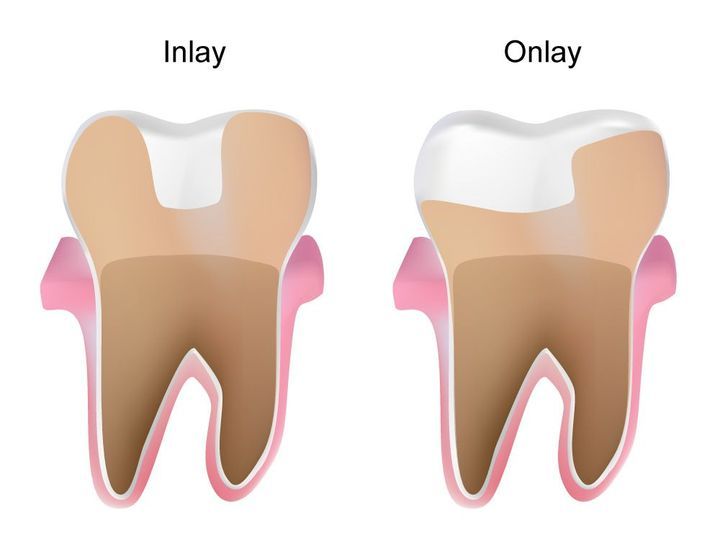Inlays and onlays near you is a dental restoration inserted inside the teeth’ cusps or bumps. There is very little space. Onlays are slightly bigger and replace the cusp(s) of the teeth and the entire chewing surface. Onlays are more like crowns in appearance.
How much time does it take? Two appointments (each lasting one to two hours) are usually required to finish the treatment. The tooth is prepared for the inlay or onlay at the initial appointment. An impression is captured and sent to the lab for the inlays and onlays in Langley to be produced. The tooth is sealed using a temporary sealant.
On the second appointment, the sealant is removed, and the inlay or onlay is placed. It will be glued to the tooth with a strong resin and polished to a smooth finish if the fit is satisfactory.
What are Inlays and Onlays?
Inlays and onlays are typically constructed of resin or porcelain. However, gold can also be used. Porcelain and resin inlays and onlays, on the other hand, are more attractive since they can be colored to look more realistic. As a result, they are occasionally used to replace unsightly fillings.
Inlays and onlays are made in a dental lab before being bonded as well as fitted to the injured tooth during dental surgery.
Inlays and onlays are part of a dental restoration that fall midway between crowns and fillings. They are used to restore moderately structurally damaged teeth and also severely damaged teeth that would most likely need a crown. They are similar to crown but a bit conservative. You may regard them as cosmetically appealing, stronger, fit better, and last longer than standard fillings.
Why Dental Onlays are a Good Choice
Dental Onlay is a new term that has been around for over three years now. It is a process done on a tooth that is too damaged to be reconstructed using a filling. Some family dentistry clinics have the tools and an experienced dentist in Langley to place the onlay on a patient’s enamel. Here are facts about this procedure and how it helps to promote oral health.
When Is It Used?
This product is placed on a tooth that has suffered extensive damage, in which a regular tooth filling would not be able to repair the damage. It is also important to note that the affected tooth must provide enough support, so the dentist near you will first carry out some tests to verify if the available tooth structure is sufficient.
The Different Types
There are two distinct varieties of this product to suit the needs of patients, namely indirect and direct onlays. The indirect procedure involves the placement of a temporary tooth filling on the first appointment. The dentistry clinics will later remove the decayed section of the tooth.
The primary role of this filling is to preserve the tooth in preparation for the next process. On the second appointment, your closest dentist will remove the packing and replace it with the onlay. The onlay is firmly cemented on the tooth using a special dental adhesive.
The direct onlay is done using the same procedure. The only difference is that a resin composite material is used to preserve the tooth. The material would have been molded using an oven before being cemented on the tooth in the past. All these processes can be done in one sitting, so no second appointment is needed.
The benefits of these two new products are that they offer comprehensive protection and resemble natural tooth colors. Tooth discoloration can negatively affect one’s confidence and self-esteem. Speak to Willow Park Dental for more information.


